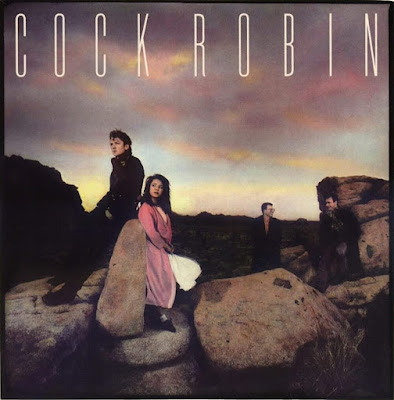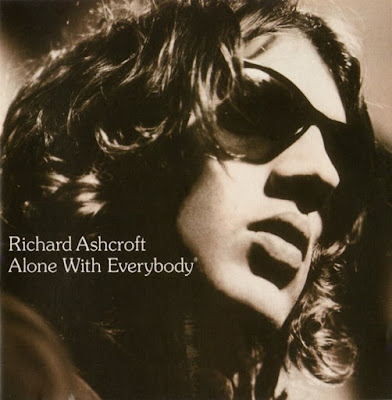Released on 26 June 1990 "Goo" was the sixth full-length studio album by US alternative rock band Sonic Youth. For this album, the band sought to expand upon its trademark
alternating guitar arrangements and the layered sound of their previous
album Daydream Nation (1988) with songwriting that was more topical than past works. Coming off the success of Daydream Nation, Nick Sansano returned to engineer Goo, but veteran producer Ron Saint Germain was chosen by Sonic Youth to finish mixing the album following Sansano's dismissal. The album spawned three singles "Kool Thing", "Disappearer", & "Dirty Boots".
Goo was a critical and commercial success upon its release, peaking at number 96 on the US Billboard 200, their highest chart position to date. Although it lacked significant radio airplay, its lead single "Kool Thing", a collaborative effort with Public Enemy's Chuck D, reached number seven on the Billboard Modern Rock Tracks chart. Since then, Goo has been viewed as one of alternative rock's
most important albums, and is considered musically and artistically
significant.
In 1989, nearly a year after the release of the band's breakthrough album Daydream Nation, Sonic Youth announced that it had signed a recording contract with Geffen Records, the group's first major label deal. Sonic Youth decided to sever relations with its former label, Enigma Records, as a result of the band's displeasure with Enigma's indecisive marketing and distribution of Daydream Nation, as well as "Teen Age Riot"—the album's accompanying single.
Another factor that contributed to the group's departure from the label was Enigma's handling of The Whitey Album, an experimental album of sound manipulation and hip-hop
influences released under the name Ciccone Youth. Not only did Enigma
reject the band's proposal to simultaneously release the album with Daydream Nation, the label's publicity branch also attempted to withdraw its cover art—an enlarged photo of Madonna's face—even though Madonna reportedly gave Sonic Youth her permission to use it.
By mid-1989, Sonic Youth's relationship with its British and American label head Paul Smith,
who the band's legal counsel, Richard Grebal, termed "a trusted advisor
but never a manager", was growing increasingly strained. Tensions
between Smith and the group had begun in 1986 when Smith arranged the
release of live recordings by the band on the album Walls Have Ears
without their input. Mindful about their work and image, Sonic Youth
was irritated by the decision. The situation was compounded further when Smith took a bold negotiating stance with major record labels during the Daydream Nation
tour and took long intervals to communicate information to the band.
His stance, which had the potential to scare away record executives,
represented the final straw for the band. On June 2, 1989, Sonic Youth
went to Smith's apartment, ostensibly to discuss another music video for
Daydream Nation, to announce an end to their partnership.
Having entertained offers from A&M Records, Atlantic Records, and Mute Records,
Sonic Youth signed a five-album deal worth $300,000 with a clause which
secured the band's complete control of its creative output. The group,
however, was somewhat dissatisfied that the album would not be released
by Geffen but rather a new and unestablished subsidiary label, DGC Records.
The original working title for the album was Blowjob?, mostly to test the humor of their new label, but ultimately the band was convinced to drop the name in favor of Goo, a title inspired by one of the album's tracks, "My Friend Goo". Because the results of these sessions were later heavily bootlegged, Moore officially released them on the album Goo Demos in 1991.
At engineer Nick Sansano's
recommendation, with a sizable budget finally at their disposal, Sonic
Youth booked themselves into Sorcerer Sound in early 1990. Sansano knew
well from his work on Daydream Nation that the band, particularly Ranaldo, enjoyed overdubbing sound and guitar effects. At Sorcerer Sound, the studio was equipped with two 24-track consoles,
allowing the group as many instrumentals as they desired. Sonic Youth
used the studio time to experiment with abstract techniques such as
hanging microphones from the Sorcerer Sound's catwalk and isolating
Shelley in a drum booth. Early on, however, the band was bogged down by issues: "It took us
forever to get final takes", said Ranaldo, "Something would inevitably
go wrong for somebody and we'd have to start again. I remember getting
fairly frustrated with it".
After the basic tracks were completed, Sonic Youth moved to Greene St. Recording, Sansano's home base, to finalize the songs and begin the process of mixing Goo.
Additional layers of guitar lines were included; vocals were
manipulated with different distortion devices, particularly on
"Mary-Christ". Sansano, however, was unsure of the album's direction: Each member of
Sonic Youth brought their philosophy to arranging the music that
conflicted with the label owner's expectations for a radio-friendly
album.
While recording Goo, Moore played the Nirvana album Bleach for Masterdisk audio engineer Howie Weinberg saying that he would be very happy if the record sounded like Bleach. Weinberg was surprised by the request to emulate a recording as primitive as Bleach
(which was recorded on a $600 budget). Moore has said that he "really
loved that record", describing it as "primal" and the songwriting as
"completely melodious" but also "punk".
Goo expanded upon the alt-rock stylings of Daydream Nation with far more deliberate pop culture
references. Another development within the band at the time was
Gordon's importance as both a lead vocalist and songwriter. Gordon
contributed two songs, "Tunic (Song for Karen)" and "Kool Thing", that challenged the expectations of a woman's role in American society. "Tunic (Song for Karen)", an exploration into self-esteem and body image, traces Karen Carpenter's struggle with anorexia nervosa
to her mother's comment that she appeared overweight onstage, and the
music industry's rejection of her proposed 1980 solo album.
A second Gordon composition, "Kool Thing", was inspired by her 1989 interview with LL Cool J. Although Gordon was a long-time fan of the hip hop artist and credited his album Radio with drawing her to rap, LL Cool J's inattention to punk music and misogynistic viewpoints towards women disenchanted Gordon. Gordon's tongue-in-cheek response to the meeting, "Kool Thing", poked
fun at her own left-wing political beliefs as well as her fascination
with the Black Panther Party. Although LL Cool J himself is not mentioned in the song, his works "I Can't Live Without My Radio", "Going Back to Cali" and Walking with a Panther were referenced. Chuck D of Public Enemy, who was at Greene Street to record Fear of a Black Planet, contributed to the call-and-response middle section.
The production's musique concrète-influenced
approach reflected Sonic Youth's inclination to record sound collages
that feature varying rhythms and overdubbing. "Mildred Pierce" and
"Scooter + Jinx" were worked out from methods that involved the band
members reconfiguring and recontextualizing different types of sound in
the studio. Deriving from the eight-minute demo "Blowjob", the angst-driven "Mildred Pierce" was inspired by the 1945 noir film of the same name. Alec Foerge observed the song as "the band's reaction against what had
become a frustratingly overwrought process", featuring nothing more than
a three-chord vamp and Moore repeatedly shouting "Mildred Pierce";
still, as Foerge described, it is an example of Sonic Youth's
progression from the primitive nature of Confusion Is Sex and Kill Yr Idols.
Goo was released by DGC Records on June 26, 1990. The album's front cover design was created by Raymond Pettibon, who was responsible for early covers for Black Flag. Instead of his original Joan Crawford sketch, Sonic Youth chose another Pettibon design: an illustration of two sunglasses-wearing British mods, based on a photograph of Maureen Hindley and David Smith, two witnesses in the Moors murders trial.
The controversy surrounding the album's content and the exposure from the single "Kool Thing" helped Goo exceed the expectations of the group's label. By December 1990, Goo had sold over 200,000 copies and ultimately peaked at No. 96 on the Billboard 200—the band's highest charting album to date.Although it was difficult for Geffen to transition Sonic Youth over to pop radio, "Kool Thing" made it onto Buzz Bin's regular rotation schedule, and became their most popular song on alternative radio, reaching No. 7 on the Billboard Modern Rock Tracks. The album contributed to alternative music's commercial breakthrough at the beginning of the 1990s, despite its limited radio airplay.
Goo received rave reviews from contemporary critics, viewed the record as Sonic Youth's most accessible work to date, the peak of noise music and found the band's distorted guitars, danceable rhythms and catchy choruses fit for radio airplay and was and is still a defiant alternative record. The legacy of this record was to be crucial piece of
the puzzle to understand how and why other alternative artists like Nirvana were able to bring the underground to the mainstream and challenge the dominant music industry hegemony".
Goo Track List:
1. Dirty Boots
2. Tunic (Song For Karen)
3. Mary-Christ
4. Kool Thing
5. Mote
6. My Friend Goo
7. Disappearer
8. Mildred Pierce
9. Cinderella's Big Score
10. Scooter + Jinx
11. Titanium Exposé











